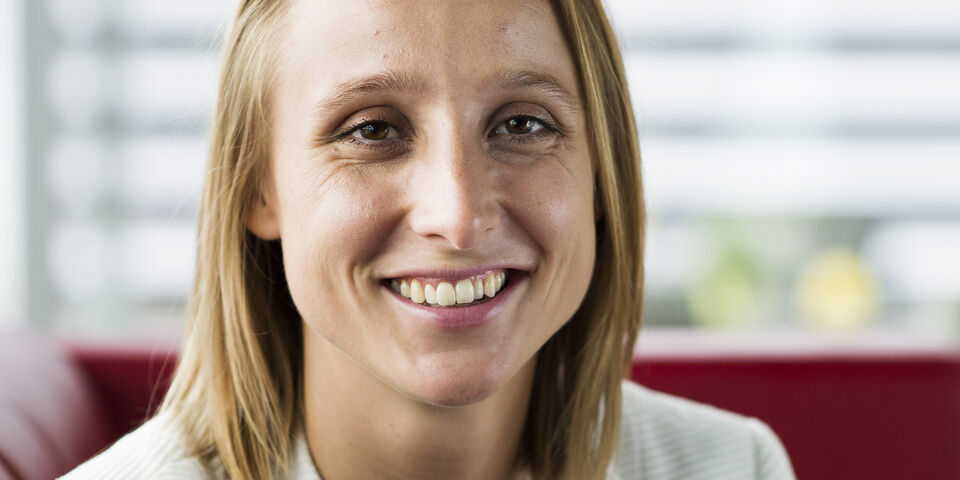Maaike van den Boomen recently graduated from the Department of Biomedical Engineering, as one of the last students of the almost defunct Biomedical NMR group. “I started with an injectable gel, developed in a cooperative project between professor Bert Meijer and Patricia Dankers. This gel – liquid upon injection and coagulating inside the body – I used as a carrier to get growth factors to the right place in the heart. During an infarction, blood vessels are necrotized causing a lack of oxygen in heart cells and necrosis of the cardiac tissue also. The injected growth factors need to stimulate the growth of new blood vessels, so that the blood supply is restored.”
In order to follow the circulation and heart function after injection by means of a new MRI technique Maaike turned to Klaas Nicolay’s group. Subsequently she spent so much time at the High Tech Campus that she finally graduated in this group. In addition, she established contacts with the Departments of Mathematics and Computer Science and Electrical Engineering to analyze the images. “Multidisciplinary research makes me very enthusiastic. It is such a joy to see how you can be involved with the same subject and yet be on a totally different wavelength. It is thanks to the many different visions that you arrive at out-of-the-box ideas.”
“The first step towards a new regenerative therapy”
The results of her study are promising. It is shown by the analysis of the images that the injected gel greatly improves the blood supply, has no negative effect on the existing heart tissue and does not change the contraction of the heart. Which makes it even more regrettable that the research will probably cease once the Biomedical NMR group becomes defunct. Maaike: “It is the first step towards a new regenerative therapy. The effects are so positive that it is being investigated whether the research can be scaled up in one go from a mouse to a pig model. However, there is a lot of organization involved in continuing this in another group. Besides, we will then miss the required imaging techniques.”
In the meantime she is still busy with the publication of a paper, which is to enhance the chances of follow-up-research. “During my graduation project I have felt like a fish in water. In Boston I want to find out now whether it is this topic in particular or research in general that I’m interested in. I’d like to obtain a PhD, but preferably in a multidisciplinary project again. Research and education – for me that’s the ideal combination.”


Discussion